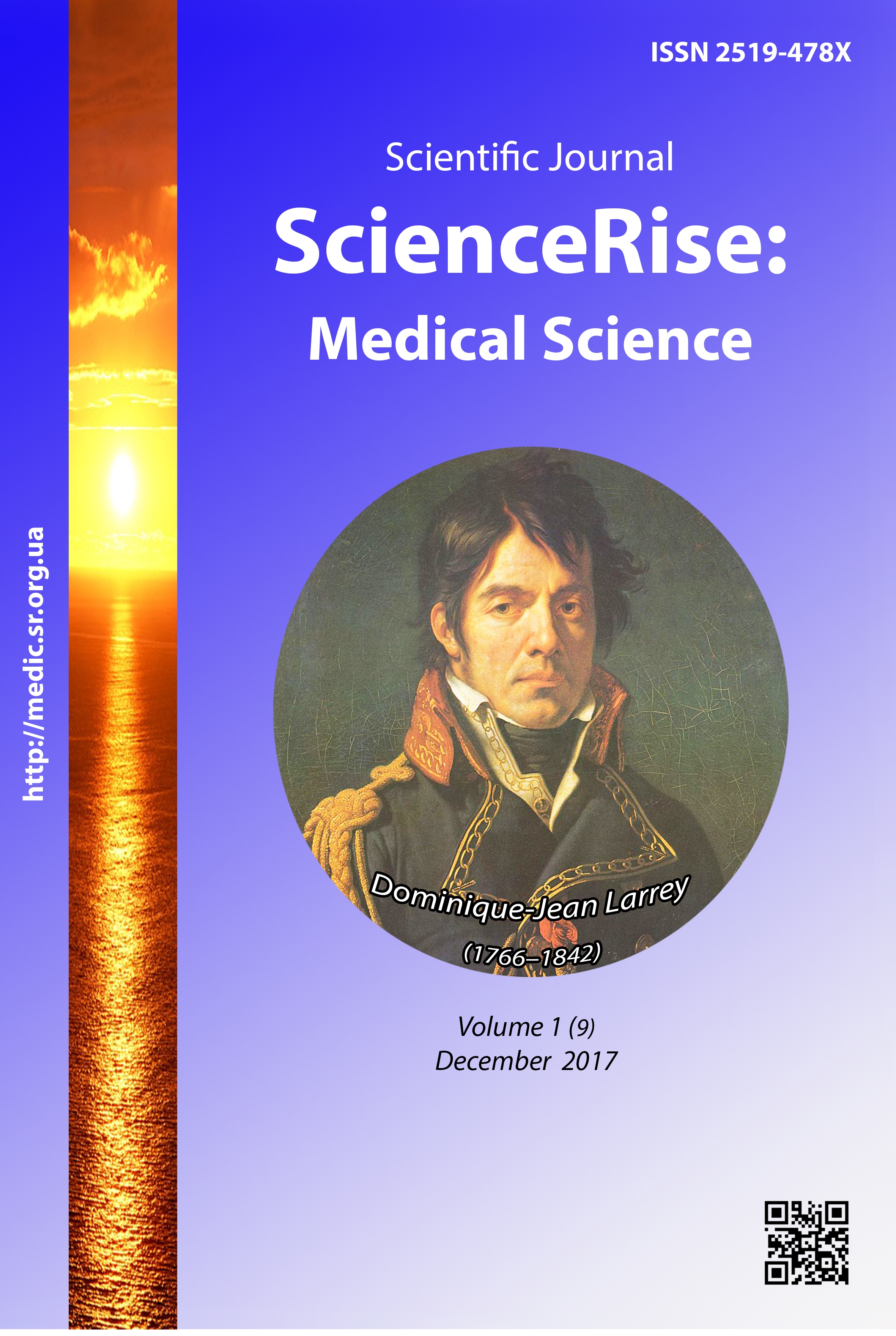Marriage and parent-child interaction state in the family functioning structure of women having paranoid schizophrenia
DOI:
https://doi.org/10.15587/2519-4798.2017.91242Keywords:
Aim. To analyze marriage and parent-child interaction state in the family functioning structure of women having paranoid schizophrenia (PS) for the further identification of possible aims of their psychological correction. Contingent and methods. 100 womeAbstract
Aim. To analyze marriage and parent-child interaction state in the family functioning structure of women having paranoid schizophrenia (PS) for the further identification of possible aims of their psychological correction.
Contingent and methods. 100 women, having PS, and their husbands were examined at psychiatric department of Zakarpattya oblast narcological dispensary during 2014 – 2016. The women were aged from 25 to 40 years, and the disease duration was from 2 to 15 years. The approximate age of the husbands did not exceed 7 years between them and their wives. 50 common families were examined as the reference group.
The women were examined using clinical and psychopathological, and psychodiagnostic methods, the men – using clinical and psychological, and psychodiagnostic methods.
Results. In result of research, substantial violations of marital and parent-child family functioning levels were found in families with women having PS; moreover, both the women with PS, and their husbands found significantly worse indexes concerning all components of this area, comparing to the healthy persons. In families, where the woman has PS, a sufficient deformation of the family interaction on the marriage (90 %) and parent-child (84 %) levels was found in 91 % of cases, which characterized by conflict and aggression high level, family functions ignoring by family members, the lack of attention to the children, the unwillingness to engage in their upbringing, high general level of neuroticism of the family members. In the other 9 %, the signs of family interaction distortion, which were out of its expressed violation indicators range, were found.
Conclusion. The obtained data were used as a base for development of the system for medical and psychological measures for optimization of mother-child interaction in women with PS
References
- Kosenko, K. A. (2015). Psyhosocial'na reabilitacija zhinok, hvoryh na paranoi'dnu shyzofreniju, pry riznyh modeljah rodynnoi' vzajemodii. DU «Instytut nevrologii', psyhiatrii' ta narkologii' NAMN Ukrai'ny». Kharkiv, 24.
- Zhyvotovs'ka, L. V., Kazakov, O. A., Borysenko, V. V. (2015). Analiz simejnogo zdorov'ja pry shyzofrenii' v odnogo z bat'kiv. Medychna psyhologija, 10 (3), 48–51.
- Pshuk, N. G., Markova, M. V., Pshuk, Je. Ja. (2012). Dynamika resursu sim’i', de prozhyvaje hvoryj na paranoi'dnu shyzofreniju. Ukrai'ns'kyj visnyk psyhonevrologii, 20 (3 (72)), 215.
- Markova, M. V., Dihtjar, V. O. (2012). Riven' funkcionuvannja rodyny jak kryterij vyboru typu psyhoterapevtychnogo vtruchannja v kompleksnomu likuvanni hvoryh na paranoi'dnu shyzofreniju. Ukrai'ns'kyj visnyk psyhonevrologii', 20 (1 (70)), 50–51.
- Plevachuk, O. Ju. (2011). Vzajemozv’jazok perebigu shyzofrenii' z psyhologichnymy osoblyvostjamy mikroseredovyshha pacijenta. DU «Instytut nevrologii', psyhiatrii' ta narkologii' NAMN Ukrai'ny». Kharkiv, 18.
- Markova, M. V., Dihtjar, V. O. (2010). Osoblyvosti simejnoi' vzajemodii' ta adaptacii' v rodyni u pacijentiv, hvoryh na shyzofreniju, z tochky zoru psyhoterapevtychnogo potencialu sim’i'. Ukrai'ns'kyj visnyk psyhonevrologii', 13 (3 (64)), 133–134.
- Karvasarskyj, B. D. (Ed.) (2007). Klynycheskaja psyhologyja. Saint Petersburg: PYTER, 960.
- Kravchenko, T. V., Trubavina, I. M. (2004). Dopomoga bat'kam u vyhovanni ditej. Kyiv: DCSSM, 99.
- Lapach, S. N., Chubenko, A. V., Babich, P. N. (2001). Statisticheskie metody v mediko-biologicheskih issledovanijah s ispol'zovaniem Ehsel: Jeksperimental'nye issledovanija. Klinicheskie ispytanija. Analiz farmacevticheskogo rynka. Kyiv: Morion, 407.
- Piontkovs'ka, O. V., Markova, M. V. (2013). Stan simejnoi' vzajemodii' jak integral'nyj kryterij reabilitacijnogo resursu rodyn ditej z onkologichnoju patologijeju. Mizhnarodnyj nevrologichnyj zhurnal, 7, 63–67.
Downloads
Published
How to Cite
Issue
Section
License
Copyright (c) 2017 Майя Олександрівна Дрюченко, Маріанна Владиславівна Маркова

This work is licensed under a Creative Commons Attribution 4.0 International License.
Our journal abides by the Creative Commons CC BY copyright rights and permissions for open access journals.
Authors, who are published in this journal, agree to the following conditions:
1. The authors reserve the right to authorship of the work and pass the first publication right of this work to the journal under the terms of a Creative Commons CC BY, which allows others to freely distribute the published research with the obligatory reference to the authors of the original work and the first publication of the work in this journal.
2. The authors have the right to conclude separate supplement agreements that relate to non-exclusive work distribution in the form in which it has been published by the journal (for example, to upload the work to the online storage of the journal or publish it as part of a monograph), provided that the reference to the first publication of the work in this journal is included.









